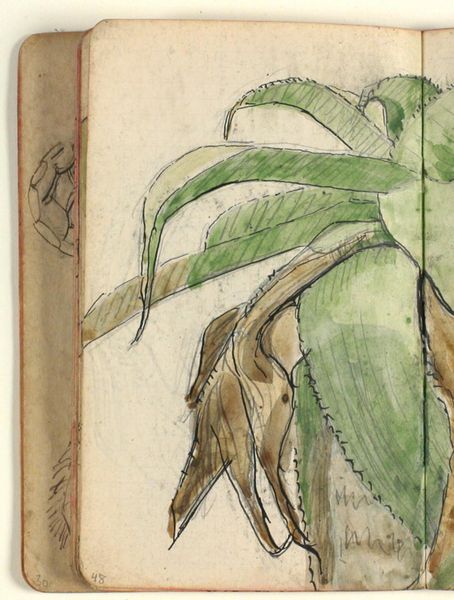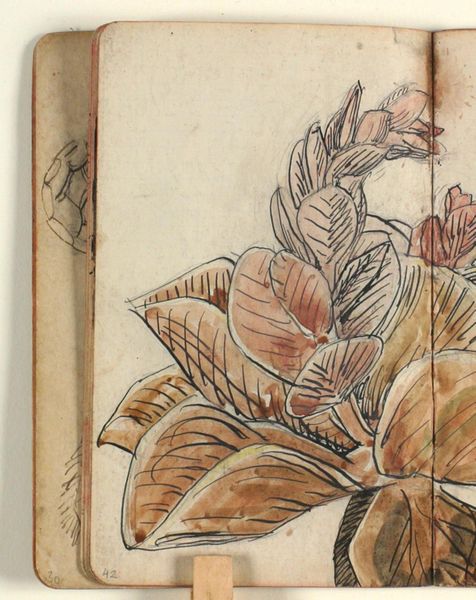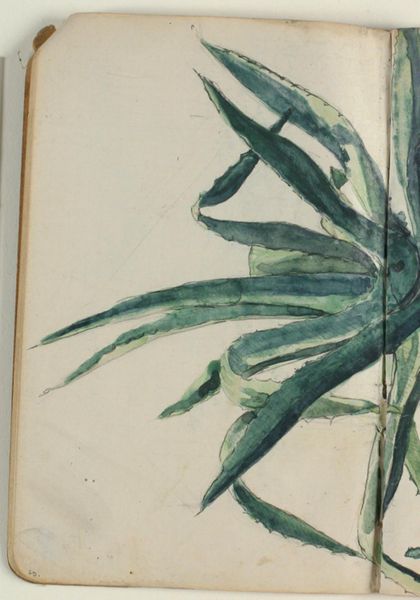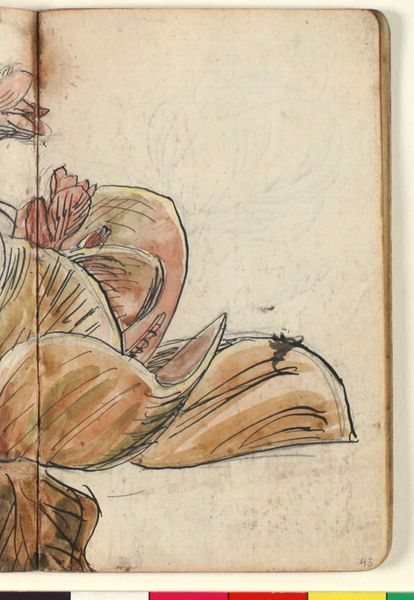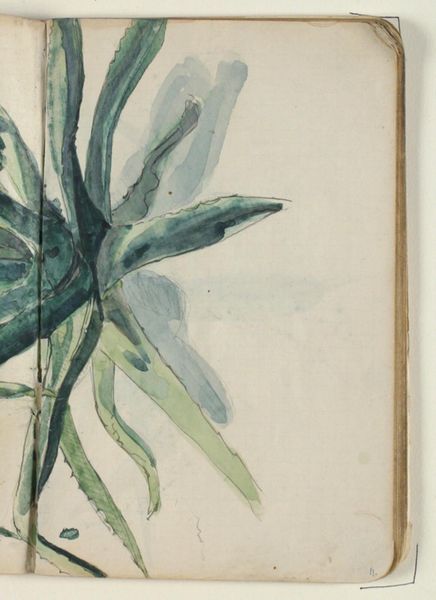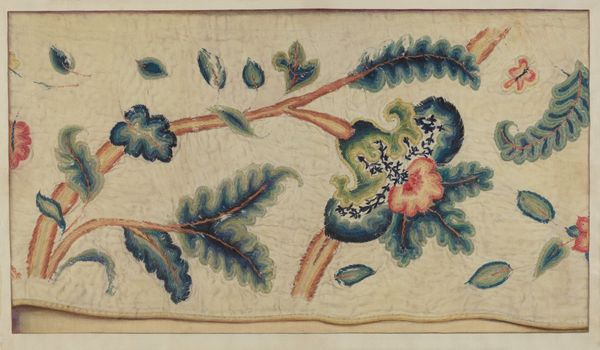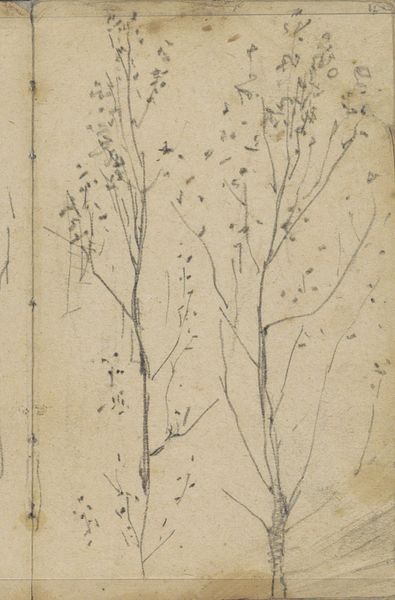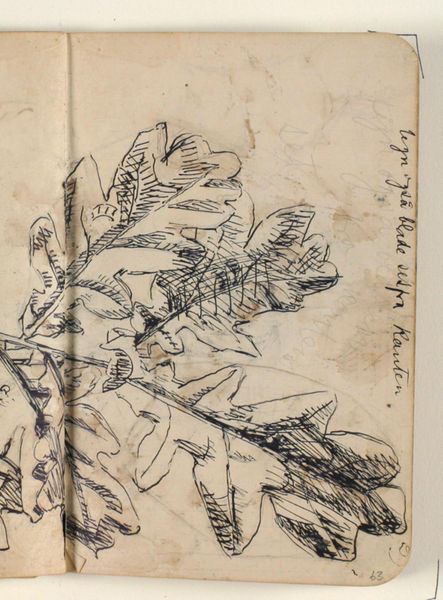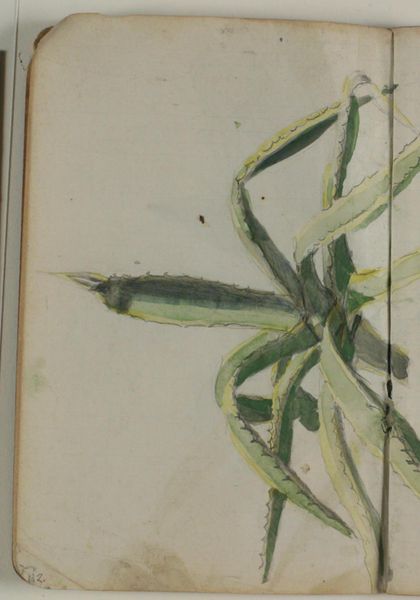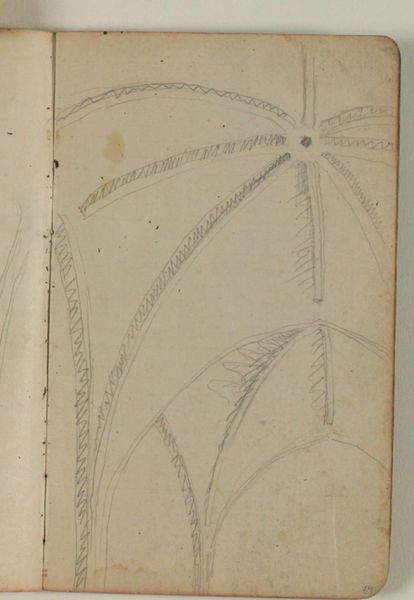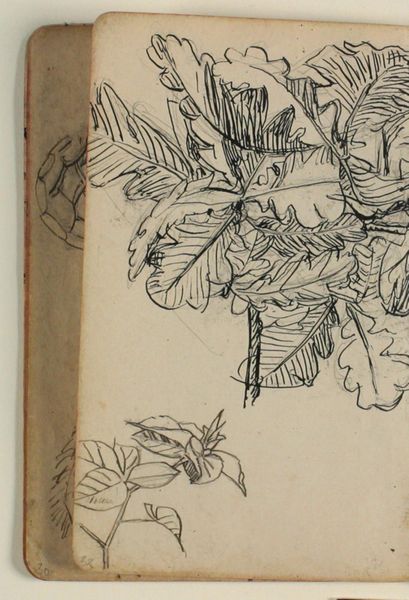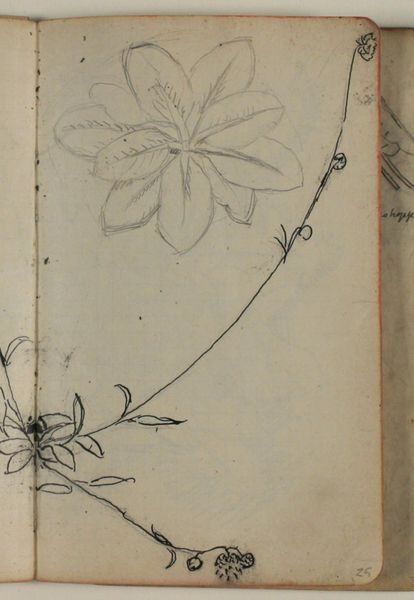
Dimensions: 161 mm (height) x 96 mm (width) (bladmaal)
Curator: This is a piece by Niels Larsen Stevns entitled "Plantestudie", placing it around 1906 to 1910. It resides here at the SMK, the Statens Museum for Kunst. Editor: Immediately, I’m struck by the rawness of this botanical study, that combination of pencil, watercolor, and coloured pencil on paper creates an incredibly intimate, almost vulnerable portrait of this plant. Curator: What's compelling here is Stevns' turn to what we could call "quiet subjects," choosing not to portray landscapes imbued with grand narratives or nationalistic sentiments but instead, focusing on the microcosm. He seeks a unique form of expression deeply rooted in Danish Impressionism. Editor: That's right. Looking closer, I wonder about the statement implied by focusing on what seems to be a decaying leaf here, represented in hues of brown amongst vibrant greens. There’s something profound in highlighting nature's cyclical aspect, even decay. Curator: Indeed, this plant study serves as a valuable record, showing how Stevns carefully observes and meticulously documents these various stages in the life cycle of this plant life. These sketches may have formed an important reference material in developing his later Symbolist pieces. Editor: And doesn't that cycle directly speak to themes of ephemerality that haunt our contemporary cultural moment too, where climate anxiety blends so starkly with our awareness of consumer culture, constantly encouraging growth without contemplating life's natural closures? It also appears very tactile in a way that might also provide the blind, or sight impaired with something like what a plant might be, albeit small on a book or journal. Curator: Absolutely, Niels Larsen Stevns engages the tradition of art and nature while giving room for personal emotions to reflect Denmark’s complex social and cultural atmosphere during that era. In essence, this particular work allows us to reflect both inwardly on our relation to time while revealing the museum's crucial role as stewards, caretakers for collective memory embodied within delicate paper and fading colors. Editor: I agree. "Plantestudie" urges conversations regarding life’s temporal dimensions across art history and contemporary awareness. And I find the decision to record the quiet life of this particular plant especially poetic, even as modernity clamors, always loudly outside.
Comments
No comments
Be the first to comment and join the conversation on the ultimate creative platform.
